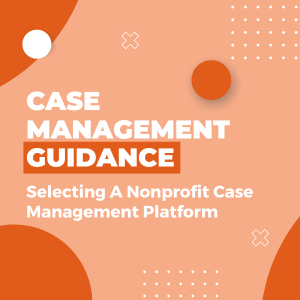Don’t Get Lost in the Matrix
In my first nonprofit senior director role, I remember being asked to complete a MacMillan Matrix for each of my programs as part of a larger strategic planning exercise. For those of you who may not be familiar with this tool, one is asked to rate whether the program is a good fit relative to the organization’s mission, whether there are other like programs in the same geographic region and how competitive the organization’s program is relative to these other similar programs, and whether there are monetary advantages to the organization in offering the program. Answers are plotted along an X and Y access, ultimately informing the organization as to whether they should invest in or divest from a program.
While somewhat informative at the time, the exercise was time-intensive and fraught with subjectivity. Thankfully, nonprofit leaders now have the opportunity to engage in a much more efficient, objective strategic planning process. Amidst the Fourth Industrial Revolution, today’s leaders can harness exponential technological advances to make data-informed decisions relative to future investments and divestments. Let’s see how this might play out in a nonprofit business line with particularly well-defined outcome measures: workforce development.
Most nonprofit mission statements speak to supporting, elevating, or encouraging their consumers. Workforce development programming is a clear path toward mission achievement, so not surprisingly, the workforce development ecosystem is extremely congested. This congestion lends itself to fierce funding competition, which is particularly problematic as today’s workforce development programs seek to offer advanced training and preparation for employment and financial success in those economic sectors offering opportunities for liveable wages at entry and advancement – a very expensive proposition.
Scoring on the MacMillan Matrix would inform most nonprofit leaders to divest immediately. However, what if our hypothetical nonprofit leader had made an investment in a case management system last year and can simply pull up the executive dashboard versus a matrix to engage in strategic planning and decision making? The dashboard shows this leader that, not surprisingly in the organization’s catchment area only months following the devastating COVID pandemic, the organization’s workforce development program is serving more individuals through two quarters than projected with 60% of individuals enrolled in the current fiscal year placed in jobs with an average hourly rate $5 above the local minimum wage. These statistics are not surprising, since the leader can then glance at the positive graduation rates from the sector-based certification opportunities the organization offers program participants. Our hypothetical leader is pleased, but there is one more set of data points to check: employment retention rates. The rates for the organization’s placed participants temper the leader’s exuberance a bit. Particularly 6 and 12 months post-placement, retention rates are not what funders expect and the organization hopes for its participants.
In a five-minute perusal of the organization’s executive dashboard, not only has the leader objectively placed the workforce development program squarely in the “investment quadrant” on the MacMilian Matrix – a program aligned to the organization’s mission is in demand and competing with most funder and organizational expectations relative to impact – the leader also knows where to spend the organization’s most valuable resource – time – relative to strategic planning and decision making.
The leader and the balance of the leadership team can spend all their time focused on an analysis of what might be driving lower than desired employment retention numbers. For example, the case management system will show this group the top employer partners who hire program graduates. Do retention challenges relate to these partners somehow? The system also shows releases of information and documentation collected. Perhaps it isn’t that graduates are no longer working 12 months after graduation, but that they did not sign the release of information allowing program staff to seek confirmation of employment directly from the employer. The case management system also shows attendance at vocational certification classes and related test scores; perhaps graduates are not adequately prepared to meet employer expectations and either the training curriculum or the vocational training provider needs to change.
It’s time to revolutionize your employment program with Exponent Case Management’s Workforce Development Module. We’ve got your back, from skills assessments to employer engagement and everything in between.Our module is affordable, easy to implement, and ensures program fidelity every step of the way. We’re not just another information system collecting dust on a shelf – we’re a hands-on partner dedicated to helping you achieve your goals through the power of data.You can say goodbye to redundant legacy systems and hello to real-time insights that drive your performance and ROI. With Exponent Case Management, you can build sustainable information systems that align with your mission and get things done.
Leaders can also rest assured that employee adoption and further customization is easily supported with a Customer Success system admin support post-implementation. The product never becomes obsolete either, as Exponent Partners invests substantially in upwards of three updates to the product each year, all based on customer feedback. Features like the workforce development module, rapid deployment modules, and the aforementioned group or class attendance tracking are all examples of these automatic updates. Watch an on-demand demo or contact us to learn more.




